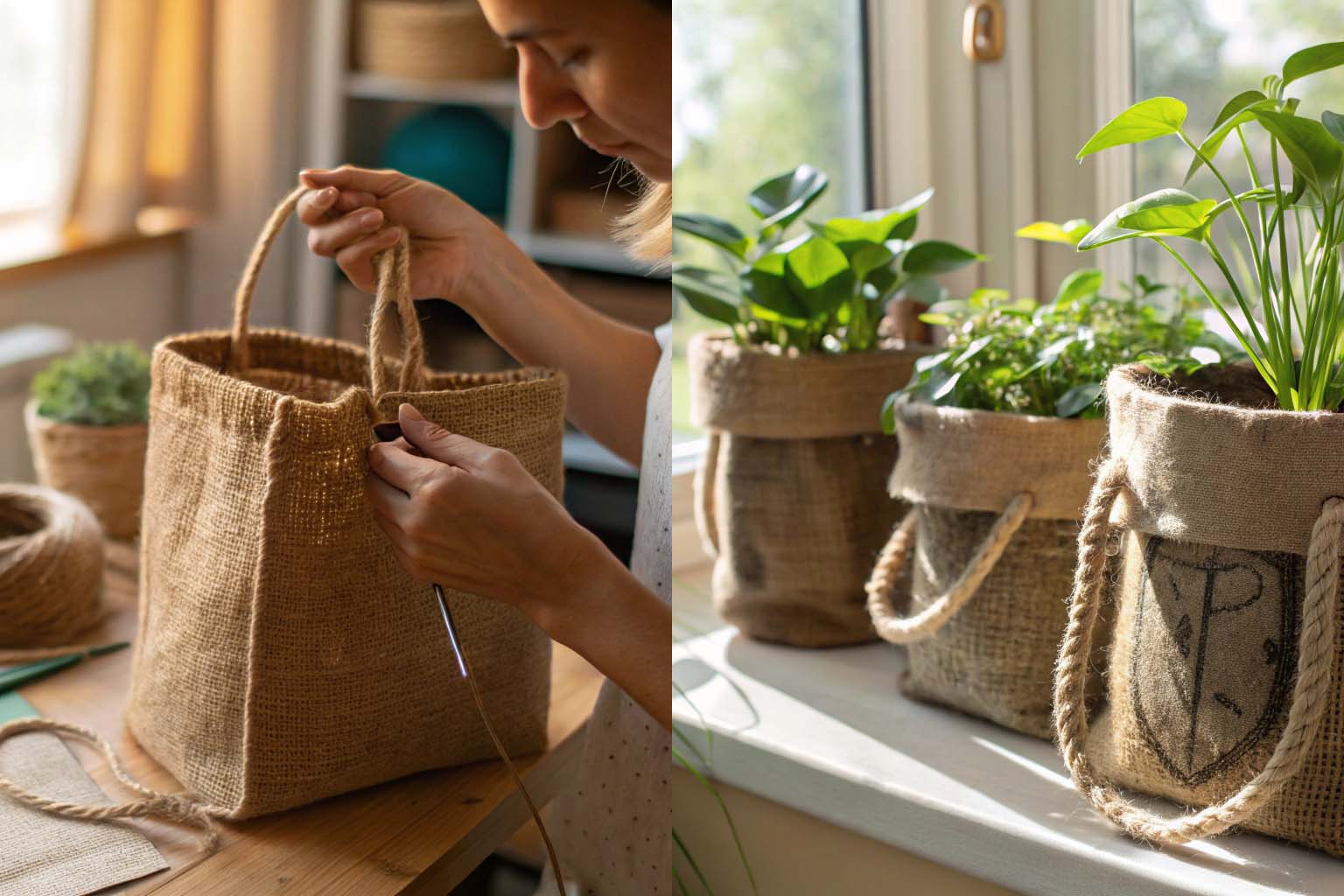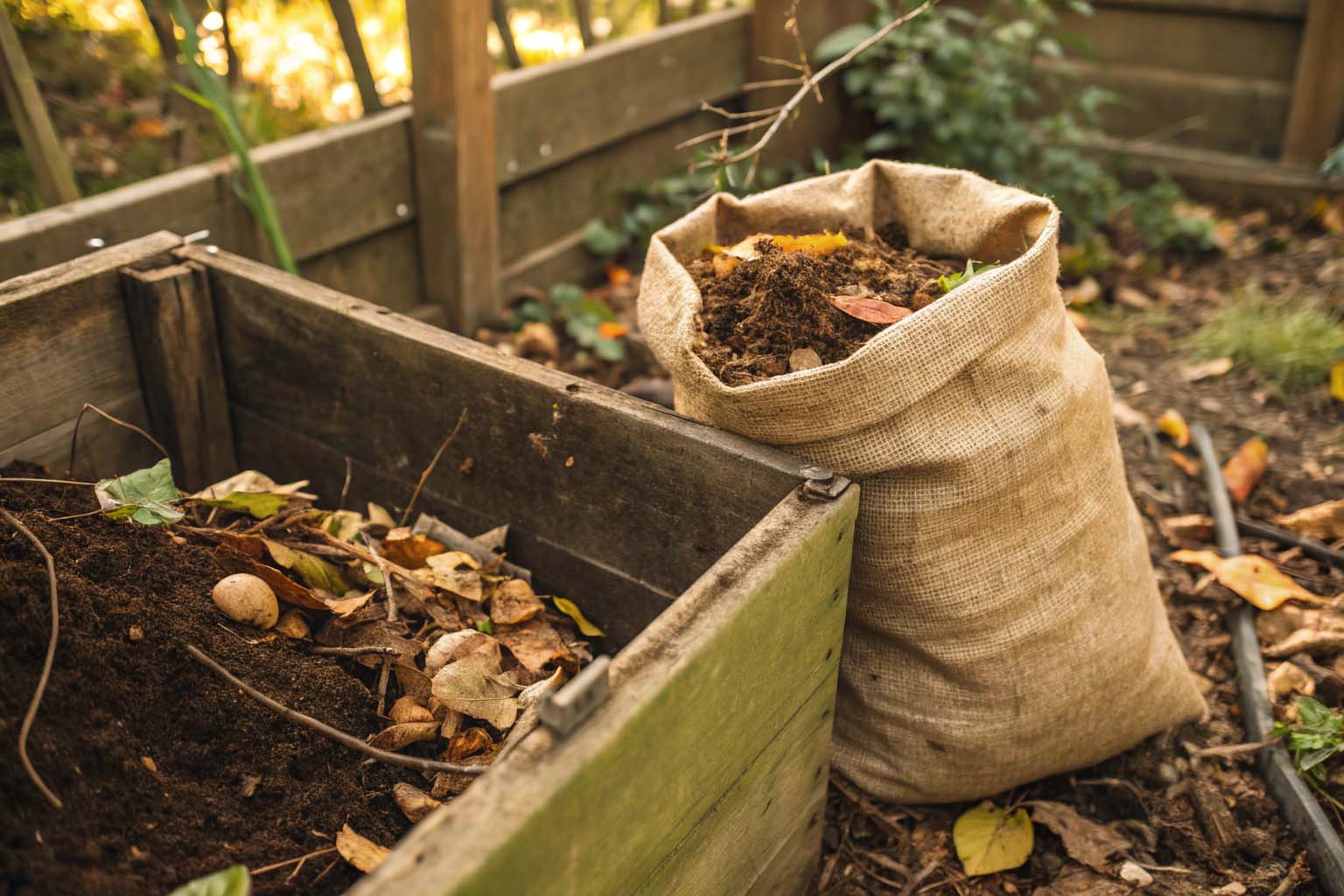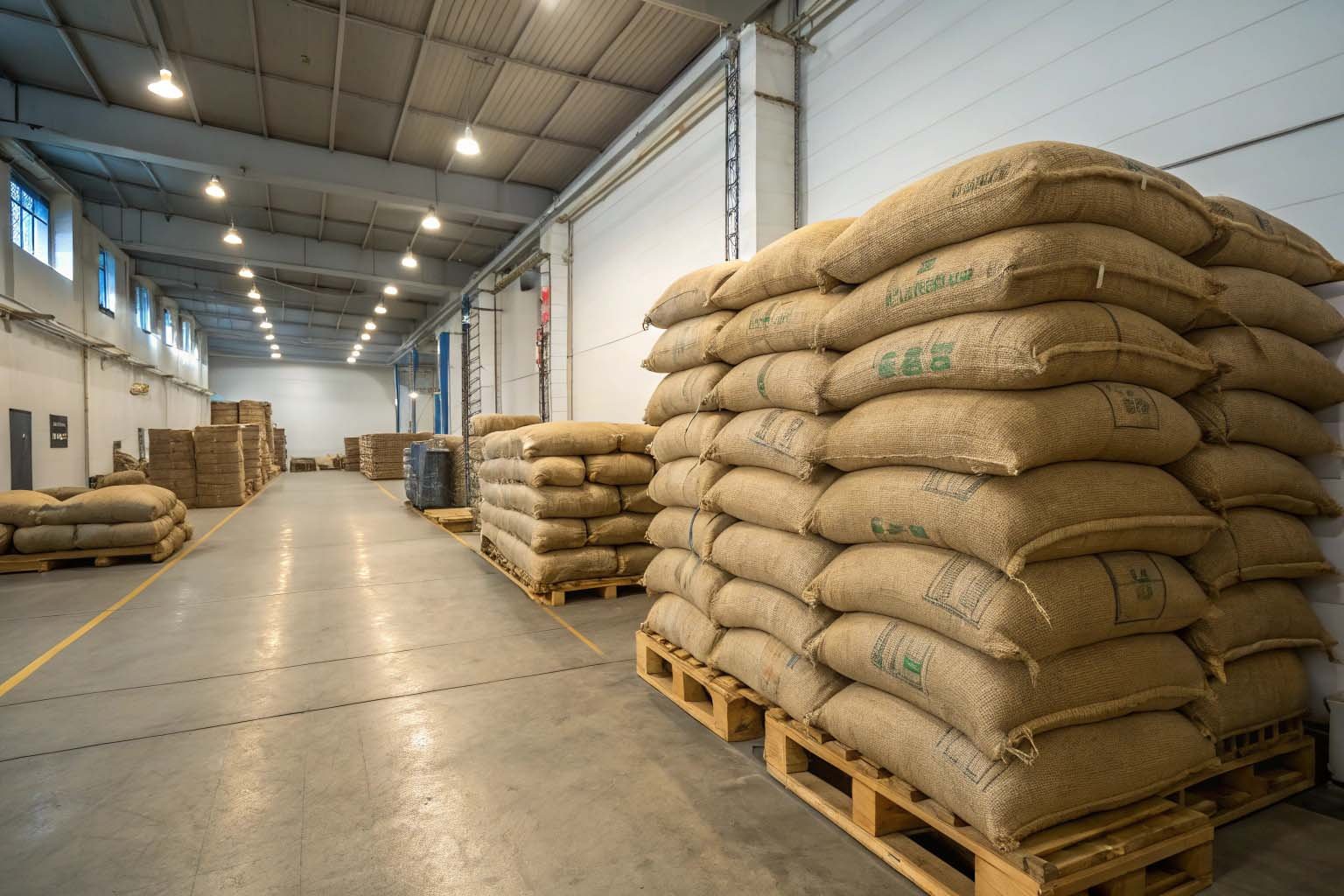Worried your jute bags won’t last or just end up in landfill? Proper care extends their life and ensures true eco-friendliness. Let me show you how.
Maintain jute bags by spot cleaning, air drying, and storing them properly. Damaged bags can often be repaired or repurposed. Most jute is biodegradable and compostable, making disposal eco-friendly if done right, especially important when considering bulk storage needs.
Getting the most out of your sacos de yute isn’t complicated, but it does require knowing a few key things. Over my years working with these materials, I’ve seen what works and what doesn’t, both for individual users and businesses managing inventory. Let’s break down the specifics, starting with keeping them clean and properly stored.
How Should You Clean and Store Jute Bags to Prevent Mold or Damage?
Found mold spots or dirt on your jute bags? It’s frustrating when they get ruined. Simple cleaning and storage tricks can keep them fresh and usable for longer.
Spot clean jute bags with mild soap and cold water, dabbing gently. Never machine wash or soak them completely. Always air dry thoroughly away from direct sun or heat. Store in a cool, dry place.
!
Cleaning and Storage
Keeping jute bags in good condition is easier than many think, but you need to respect the natural fiber. Jute absorbs water easily and can weaken or get misshapen if soaked. Machine washing is definitely out – the agitation is too harsh, and it often leads to shrinkage.
Gentle Cleaning is Key
For most spills or dirt marks, spot cleaning is the way to go. Mix a tiny amount of mild soap (like dish soap) with cold water. Use a soft cloth, dip it in the soapy water, wring it out well, and gently dab the stained area. Avoid rubbing hard, as this can fray the fibers. Rinse the cloth with clean water, wring it out, and dab the area again to remove soap residue. Remember, less water is better.
Drying Jute Correctly
This step is critical to prevent mold and maintain the bag’s shape. Never put a jute bag in a tumble dryer. The heat will shrink it significantly. Instead, hang the bag up or lay it flat to air dry completely. Make sure air can circulate around it. Drying it indoors or in a shady spot outdoors is best. Direct sunlight can make the fibers brittle over time. Ensure it’s bone dry before storing.
Smart Storage Prevents Problems
Store your clean, dry jute bags in a cool, dry, and well-ventilated area. Avoid damp basements or humid closets, as this encourages mold growth. Don’t store them in sealed plastic bags either, as this traps moisture. If you fold them, try not to crease them sharply in the same place every time.
Here’s a quick reference:
| Action | Do | Don’t | Why |
|---|---|---|---|
| Washing | Spot clean with damp cloth & mild soap | Machine wash, submerge, or soak | Prevents fiber damage, shrinkage, and misshaping |
| Drying | Air dry completely, away from direct heat | Use a tumble dryer or leave in direct sun | Prevents shrinkage, brittleness, and fiber weakening |
| Storing | Keep in cool, dry, ventilated area | Store in damp places or sealed plastic bags | Prevents mold, mildew, and musty odors |
| Stain Removal | Dab gently | Rub vigorously | Avoids fraying the jute fibers |
Following these simple steps makes a huge difference in how long your jute bags look good and remain usable.
Can Damaged Jute Bags Be Repaired or Creatively Repurposed?
Got a jute bag with a ripped seam or broken handle? Don’t just throw it away! Giving it a second life through repair or repurposing is easy and sustainable.
Yes, minor tears can often be sewn shut, and handles reinforced or replaced. For badly damaged bags, cut them up for plant pots, craft materials, storage pouches, or even cleaning rags. Get creative!

Repair and Repurposing
It’s always disappointing when a bag breaks, but with jute, there are often simple solutions. Extending the life of a product is a core part of sustainability. I’ve seen clients save bags that seemed destined for the bin with just a little effort.
Simple Fixes for Common Damage
Small rips or tears along seams are usually easy to fix. Use a strong needle and thread (upholstery thread works well) and simply stitch the seam closed. Hand-sewing is generally best. If a handle tears off, you might be able to re-sew it securely, perhaps adding a small patch of sturdy fabric (even another piece of jute) underneath for reinforcement. If a handle breaks completely, consider replacing both handles with new ones made from webbing, rope, or even strips cut from an old pair of jeans.
Getting Creative: Repurposing Ideas
Sometimes a bag is too damaged for a simple repair, especially if the main body has large holes or extensive staining. But the material itself is still valuable! Jute is fantastic for various second uses. Cut it into squares to place in the bottom of plant pots for drainage, or use larger pieces as weed mats in the garden. Smaller pieces can be sewn into little pouches for storing small items, used as coasters, or incorporated into craft projects. Its rustic texture adds character. You can even use clean scraps as tough cleaning rags for scrubbing.
When is a Bag Beyond Saving?
If the jute fabric itself is rotting, extremely brittle, or covered in stubborn mold, it might be time to let it go (we’ll cover disposal next). Also, if the damage compromises the bag’s ability to hold weight safely and a repair isn’t feasible, repurposing is the better option.
Here are some repurposing ideas:
| Repurposing Idea | How-To Snippet | Usefulness |
|---|---|---|
| Plant Pot Liners | Cut squares to fit pot bottom | Improves drainage, prevents soil loss |
| Garden Weed Mat | Lay larger pieces around plants | Suppresses weeds naturally |
| Small Storage Pouches | Sew simple drawstring or envelope-style bags | Holds trinkets, hardware, craft supplies |
| Craft Material | Use in scrapbooking, collage, rustic decor | Adds texture and natural element |
| Coasters/Placemats | Cut shapes, maybe back with felt or cork | Protects surfaces, adds rustic charm |
| Scrubbing Rags | Use clean scraps for tough cleaning jobs | Abrasive texture helps lift grime |
Thinking creatively turns potential waste into useful items.
Are Jute Bags Really 100% Recyclable or Compostable After Use?
Wondering what to do with jute bags at their very end-of-life? It’s confusing! Knowing if they truly break down helps ensure you’re making the most sustainable choice.
Natural, untreated jute fiber is highly biodegradable and compostable. Cut the bag into small pieces for faster breakdown in a home compost bin. Remove any non-jute parts like plastic linings, zippers, or synthetic threads first.

End-of-Life Options
This is a question I get asked a lot, especially by businesses concerned about the full lifecycle of their packaging or products. The good news is, pure jute is one of the most environmentally friendly materials when it comes to disposal.
Understanding Jute’s End-of-Life
Jute is a natural plant fiber, primarily composed of cellulose and lignin. This means, like wood or leaves, it will naturally decompose when exposed to moisture, microorganisms, and oxygen. Biodegradable means it breaks down naturally. Compostable means it breaks down relatively quickly under specific composting conditions (heat, moisture, microbes) into nutrient-rich humus, beneficial for soil. Pure jute fits both descriptions. Standard textile recycling facilities often struggle with jute, so composting or natural decomposition is usually the best route.
How to Compost Jute Effectively
For home composting, the key is to help the process along. Cut the jute bag into small strips or squares – the smaller the pieces, the faster they’ll break down. Mix these pieces into your compost bin with other ‘green’ (nitrogen-rich like food scraps) and ‘brown’ (carbon-rich like dried leaves) materials. Ensure the compost stays moist and gets turned occasionally for aeration. In a healthy compost pile, jute pieces should decompose within a few months to a year, depending on conditions.
What About Non-Jute Components?
This is crucial. Many jute bags, especially tote bags designed for durability or moisture resistance, might have additions:
- Plastic Linings (PP/LDPE): These must be removed before composting. They won’t break down.
- Synthetic Threads: Often polyester or nylon thread is used for stronger seams. These won’t compost either.
- Asas: Sometimes handles are made of cotton (compostable) or synthetic materials like polypropylene webbing (not compostable).
- Zippers/Metal Parts: These need to be removed.
- Inks/Dyes: While many eco-friendly inks are used now, heavily printed areas with certain types of ink puede be slower to decompose or contain non-compostable elements. Natural dyes are best.
Carefully inspect the bag and cut away any non-jute materials before adding the pure jute fiber to your compost.
| Disposal Method | Considerations | What to Remove First |
|---|---|---|
| Home Composting | Best for pure jute; cut into small pieces | Plastic lining, synthetic thread, zippers |
| Municipal Composting | Check local facility acceptance rules | As above, follow local guidelines |
| Burial (Garden) | Decomposes naturally, enriches soil over time | As above |
| Textile Recycling | Often not accepted; check locally | May need separation based on facility rules |
| Landfill | Last resort; jute will biodegrade but slowly | Ideally, remove non-biodegradable parts |
Choosing the right end-of-life option ensures your commitment to sustainability goes full circle.
What Are the Best Practices for Storing Bulk Jute Bag Inventory?
Storing large quantities of jute bags for your business? Poor storage can ruin inventory, leading to mold, pests, and unnecessary costs. Protect your investment with the right storage setup.
Store bulk jute bags folded or flat in a cool, dry, dark environment. Keep them off the floor on pallets or shelves. Ensure good air circulation and avoid plastic wrapping that traps moisture. Implement FIFO (First-In, First-Out).

Bulk Storage
For businesses handling hundreds or thousands of jute bags – whether for retail, events, or packaging – proper storage is non-negotiable. Losing inventory to damage is throwing money away and undermines the sustainable choice you made. I’ve seen firsthand how a damp warehouse corner can ruin a whole batch.
Creating the Ideal Storage Environment
The enemies of stored jute are moisture, direct sunlight, and pests.
- Temperature & Humidity: Aim for a consistently cool and dry space. Avoid areas with high humidity fluctuations or potential leaks. Basements can be risky unless well-ventilated and climate-controlled.
- Light: Keep bags away from direct sunlight or strong artificial light, which can weaken and fade the fibers over time. A darker storage area is better.
- Ventilation: Good air circulation is key to preventing mustiness and mold growth. Don’t pack bags too tightly together; allow some space for air to move. Avoid wrapping pallets tightly in plastic film, as this traps any ambient moisture. Breathable pallet covers are a better option if dust is a concern.
Stacking and Handling Techniques
Jute bags usually arrive folded and bundled. Store them flat or neatly folded on shelves or pallets. Avoid excessively high stacks that could crush the bags at the bottom or become unstable. Keep pallets off concrete floors directly, as concrete can wick moisture upwards. Use wooden pallets or dunnage. Handle bales or bundles carefully to avoid tearing the outer bags.
Inventory Management and Checks - FIFO (First-In, First-Out)1: Always use the oldest stock first. This ensures bags don’t sit in storage indefinitely, potentially degrading over long periods. Mark bales or shelves with arrival dates.
- Regular Inspections: Periodically check your inventory, especially stock stored near walls or in corners. Look for any signs of dampness, mold, mildew, or pest activity (rodents or insects can be attracted to natural fibers). Address any issues immediately.
| Factor | Best Practice | Why it Matters |
|---|---|---|
| Ubicación | Cool, dry, dark room | Prevents mold, fading, fiber degradation |
| Floor Contact | Store on pallets or shelves, off concrete | Avoids moisture wicking from floor |
| Air Circulation | Allow space between stacks; avoid tight plastic wrap | Prevents moisture buildup, mold, musty odors |
| Stacking | Neat stacks, not excessively high | Prevents crushing, ensures stability |
| Inventory | Use FIFO system (First-In, First-Out) | Ensures stock rotation, minimizes long-term storage |
| Inspection | Check periodically for damp, pests, mold | Allows early detection and mitigation of problems |
Protecting your bulk jute bag inventory is simple risk management and ensures the products you provide are in perfect condition.
Conclusión
Following these simple care, repair, disposal, and storage tips helps your jute bags last longer and stay truly sustainable. It protects your investment and aligns with eco-conscious values.
-
Understanding FIFO is crucial for effective inventory management. This link will provide insights into its benefits and implementation. ↩


